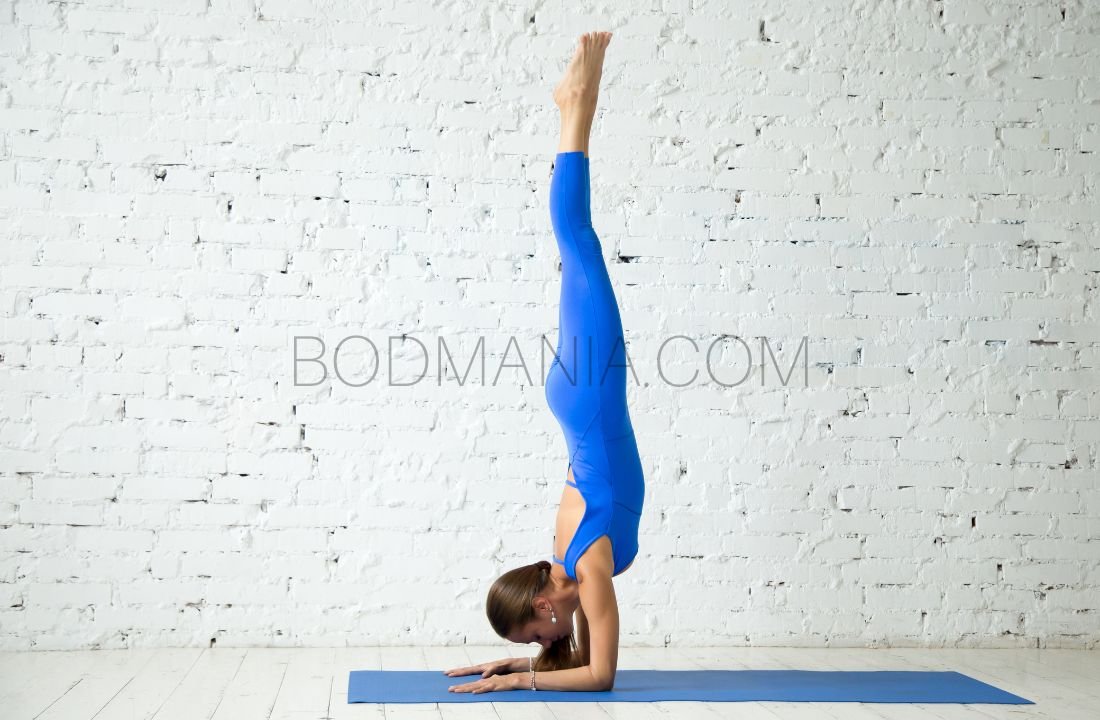Women have special psychological and biological needs, but these needs are often overlooked because of their many roles in society- as a wife, a mother, a housemaker, and a worker. Their routine involves multi-tasking, is hectic, and can leave them feeling stressed, tired, and drained. They work all year round with no breaks and almost no time to themselves to rejuvenate, but in fact, they are the ones that need it the most. Mothers, taking out time from your busy days is important for you to reset and restore, yoga can help you relax and stay healthy. Becoming a yoga mom will allow you to do that, because only if you grow, can you nurture those around you well. Women should do yoga at every phase of their life to help them stay healthy physically as well as mentally. So, are you ready to become a yoga mom?

Mom Yoga: The Beginning- Yoga, and Pregnancy:
Pregnancy is a phase of excitement and worries alike, it comes with various stresses to the expecting mother not just physically but also mentally. There are plenty of changes happening biologically and in such a situation yoga can help the mother-to-be relax, and be healthier for better pregnancy outcomes.

Positive emotions like happiness, care, pleasantness, and faith are strong emotions that help the baby to grow better. Regular practice of yoga asana during pregnancy can help you cope with common symptoms like- morning sickness, nausea, constipation, mood swings, breathing problems, fatigue, backache, leg cramps, etc. It is also believed that yoga can help optimize the baby’s position and also cut down the contraction period to two hours maximum.
Yoga Mom – When can pregnant women start yoga?
For a person who hasn’t ever practiced yoga previously or does not practice it regularly, they should start from the second trimester since your body is not accustomed to the poses, if you are a regular practitioner of yoga then you can continue practicing it under supervision of a trained instructor and inform them of your pregnancy to skip some complicated asanas.
Yoga Asana During Pregnancy: Here are some asanas or poses to perform during pregnancy
1. Sukhasana Pose

The Easy or Pleasant Posture: This yoga pose should be done throughout the pregnancy as the expansion given to the hip joint would improve flexibility.
Method to Practise:
Starting Position:
Sit on a mat spread on the floor with legs fully stretched out and without taking the support of any wall or fixture.
Steps:
- Sit cross-legged and try to keep both knees equidistant up from the floor.
- Gently place your hands on your respective thighs near the knees, palms facing downwards.
- Keep your body erect, abdomen in normal contour, head poised, chin parallel to the ground taking care not to stiffen your body. The elbows should be aligned with your body such that they are not pushed outwards or pressed inwards but in a comfortable position.
- Keep your shoulders relaxed, not drooping.
- Sit in this position and watch your breath (or focus on any object of your choice).
- Posture Release
- Straighten both your legs as in the starting position.
2. Ushtrasana Pose

The Camel Pose: This pose is especially important during the final trimester, it helps stretch the abdomen, open up the hips, and can help relieve lower back pain.
Method to Practise:
Starting Position:
- Sit on the mat in a kneeling position with your toes and heels together. It is best to keep the knees together but you may keep your knees slightly apart for comfort and balance.
Steps:
- Gradually lean backward, and take your arms behind.
- Place your hands on your heals
- While inhaling, slowly lift your pelvis, waist, and body both outwards and upwards.
- Gently allow your neck and head to fall back.
- Remain in this position for 6 seconds holding your breath
- Posture Release
- Exhaling, relax your torso and slowly straighten your head and neck.
- Release your palms and resume the kneeling position.
3. Utkatasna Pose
The Upraised Posture: This strengthens the thighs and pelvic muscles till comfortable, use adequate support as needed. Avoid going on the toes.
Method to Practise:
Starting Position:
- Stand erect. Keep your hands at their respective sides.
- Keep a one-foot distance between both your feet, which are parallel
- Focus your eyes at one point straight ahead.
Steps:
- While inhaling, with palms facing down, raise both your hands parallel to each other, in front of the body, up to shoulder level.
- Simultaneously raise your heels to stand on your toes. (avoid this step)
- Exhaling, lower your body to a squatting position till your thighs press against the calves.
- Hold this squatting position suspending your breath for six seconds.
- Posture Release
- Inhaling, rise to your feet, and stay like this retaining your breath for six seconds
- Exhaling bring the hands down and return to the starting position
4. Bhadrasana Pose
The Auspicious Posture: This helps in stretching the thigh muscles, releases stiffness in your hips, and strengthens your lower abdomen, pelvis, and groin muscles.
Method of Practise:
Starting Position:
- Sit erect with your legs outstretched and hands at the sides.
Steps
- Bending both your knees bring the soles of both your feet together.
- Use your hands to bring the soles of the feet as close to your body as possible.
- Once your feet are closest to the body, keep holding them, trying to push the knees down to the floor. You can also use both your palms to gently push the knees downwards in case Step 2 is difficult.
- Once your knees are as far down as possible hold the feet with your hands, close your eyes and breathe normally, and watch your breath. Or, you can place your palms on your knees.
- Posture Release
- Gently opening the eyes release one leg at a time to return to starting position.
5. Shavasana Pose

The Corpse Posture: This is a great asana for much-needed relaxation. While lying down always lie down from the side and then go your back.
Starting Position:
- Lie down on your back (but first on your side and then back). Extend your arms by the side such that they are not too far or too near the thighs. Keep your legs comfortably apart
- Once in this position, close your eyes and remain motionless throughout the practice.
Steps:
- Close your eyes and follow normal rhythmic breathing.
- Avoiding any movement of the body, consciously switch off all nervous stimuli. (you can go for guided Shavasana as well)
- Maintain this state for about 15 to 20 minutes.
- Posture Release
- Gently open your eyes.
- Slowly lie on the right side for a few minutes before sitting up.
Certain other asanas that a pregnant woman can practice include: Vajrasana, Yashtikasana, Parvatasana, Talasana (after three 3 months do not raise your toes), konasana, gomukhasana, vajrasana, prayankansana, dradhasana,
Pranayama or breathing techniques are also important to practice during pregnancy, certain pranayamas to do are- anuloma-viloma (alternate breathing), diaphragmatic breathing (not in 3rd trimester), Equal breathing, and intercostal breathing.
Yoga Poses to Avoid During Pregnancy?
It is advised that during pregnancy yoga is practiced under the supervision of a qualified instructor so that they will guide you through which asanas are safe. In general, it is advised to avoid postures that require twisting in complicated angles, jumping, and those that need you to lie on your stomach. Listen to your body and remember that yoga is to stretch and not to strain, so be aware of your body and stop if you feel any strain.
Mom Baby Yoga: Yoga with Mom
Children although may seem carefree also have different stressors in life like the pressures of school, playing sports, and doing homework. Excelling, dealing with bullies, competition, and expectations can be overwhelming. In today’s world yoga can help provide much-needed release and relaxation. These habits must be inculcated early on so they can deal with life in the future. Children can begin yoga as early as 5 years. But you can start even earlier, children learn from observing their parents, when they grow up seeing their mother doing yoga, they will be more inclined to do it.
When old enough, practice yoga along with your child, all family members should take interest in it and encourage the child as well as explain the benefits. Children are flexible and can do the asanas more easily, they can also be taught meditative and relaxation postures for 5-10 mins to calm their restlessness and improve concentration.
You can make the practice of asanas fun for them by doing yoga postures as seen in nature and bringing that comparison to life. They also need to be taught a different way since they shouldn’t hold their breath. In such a situation pranayamas are also not recommended for them.
Certain asanas are helpful for kids:
- Garudasana (Eagle Pose): Helps concentration, focus, balance, and poise and is excellent for stress management.
- Adho Mukha Svanasana (Downward Facing Dog Pose): In this pose keep the inhalation and exhalation equal and rhythmic. This will help relieve stress, fatigue, and backache. It will also help improve the posture
- Balasana (Child Pose): This is excellent for stress management and relaxation.
- Vajrasana (Thunderbolt Pose): This pose will help keep your digestive system in order, it will help with those butterflies in the stomach that comes with exams.
Yoga For Working Mothers:
A working mother is always struggling to achieve a work-life balance, in such a situation yoga takes a backseat. But yoga in working mothers helps improve energy and productivity, it will be rejuvenating. Moreover, it will set a good example for children who will understand to prioritize health. Be mindful, manage your time and plan your day such that you can make time for what’s important. Here are some ways to include yoga in your everyday life:
- When you wake up in the morning, avoid getting up from bed immediately. For a few moments reflect on the quality of your sleep quality, and stretch out in Yashtikasana. Follow it up by bending each knee as in Pavanamuktasana. Bend one leg at a time and place the foot on the opposite thigh or cross the legs while still lying-in bed. Sit up turning to one side. Cross your legs and watch your breath for a minute. This entire process takes only five minutes but it readies you for the day.
- Bathing must be mindful. Make this into a prayer. Stand under the shower in a pose of prayer and allow the water to soak your body for a few seconds. Keep your eyes open as you do not want to lose balance. Soap yourself and as you do so, bend and scrub your legs and feet touching your feet as in Hastapadasana. Once the soaping is over, rub your body as the water rinses the soap off. During this process, bend sidewards, forward and finally look up and allow the water to run down your throat. This entire process should not take more than five minutes. Dry yourself and wrap yourself in a loose robe.
- Do not dress immediately. Sit in a comfortable meditative posture or lie down in Shavasana for a few minutes as it enables you to relax. This part is extremely important for an office-goer.
- During the entire day, try and keep a calm mind, approaching every event and situation with patience, grace, and mindfulness of the self and others.
- Throughout the day, especially when you are in a sedentary job try to get up and do some stretches and walk about for some time. Staying sitting for very long is harmful to health.
- Try to make time for certain asanas like Talasana, Trikonasana, Parvatasana, Halasana and Surya Namaskar
- Before retiring for the night, practice reflection. Reflect upon the activities of the day without becoming too judgmental. Sit on a bed, and practice breathing alternately through your nostrils. This should take around 5 to 10 minutes.
- Doing guided meditation is extremely helpful to change the way you think, work, and organize your day, it helps you attract peace and positivity. Try to practice it for 15 minutes every day.
- Sleep with a positive thought in mind.
Conclusion
Yoga is important in every phase of life for women because of the various benefits it imparts. During pregnancy, it should be practiced under the supervision of a qualified professional. Mothers should also continue practicing it after giving birth since it helps inculcate good habits in kids. Children can start as early as 5 years old and should be encouraged by the family to practice it. While making time for yoga can be difficult for working mothers, it is also important to make time for things that are important like maintaining good health, this can be done by being mindful and planning your day.
References:
- The Yoga Institute. (2016). Yoga Care During Pregnancy. https://theyogainstitute.org/yoga-care-during-pregnancy/
- The Yoga Institute. (2019, July 12). Yoga & Pregnancy. https://theyogainstitute.org/yoga-and-pregnancy/
- Yogendra, H. J. (2018). Yoga for All: Discovering the True Essence of Yoga (2018th ed.). Rupa Publications India.
- The Yoga Institute. (2019a, April 1). Yoga Asanas for Kids. https://theyogainstitute.org/yoga-asanas-for-kids/
- The Yoga Institute. (2019b, June 26). Yoga & Balancing Home + Profession. https://theyogainstitute.org/yoga-balancing-home-profession/



